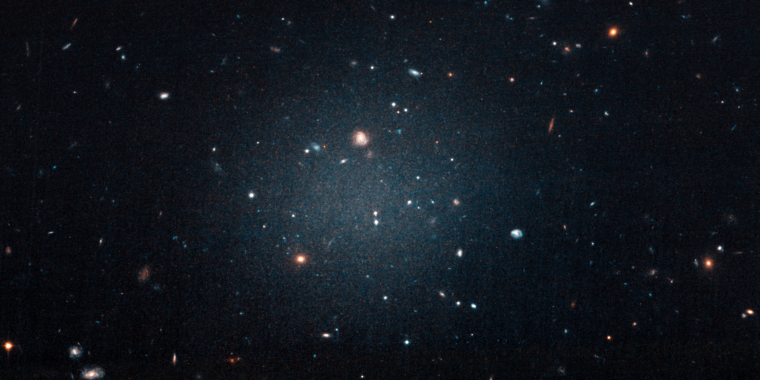
And, to date, it's impossible to explain the behavior of almost all the galaxies we've observed without concluding that they have a significant dark matter component.
However, researchers recently identified one way the galaxies could form: A small galaxy could be swallowed by a larger one that keeps the dark matter and spits out the stars.
Now, a second option has been proposed, based on the behavior of dark matter in a galaxy cluster.This model may explain a series of objects found near the dark matter-poor galaxies.
And it may suggest that galaxy-like objects could be formed without an underlying dark matter component.
But, because there can be a lot of gas present after the dark matter has moved on, it's possible the regular matter can form structures that lack a dark matter component.
The new research applies this logic to the two best-established dark matter-free galaxies, called DF2 and DF4, which are dwarf galaxies that exist near a normal, large galaxy called NGC 1052.It's easy to model collisions between dwarf galaxies that create a situation akin to the Bullet Cluster, with dark and regular matter separated.But it would also mean that the dwarf galaxies wouldn't have a combined speed that would create a sufficiently violent collision.